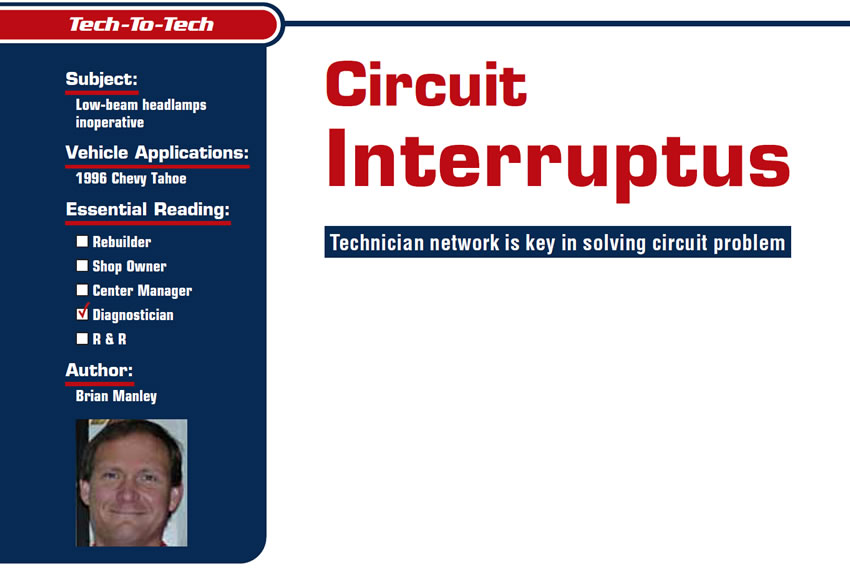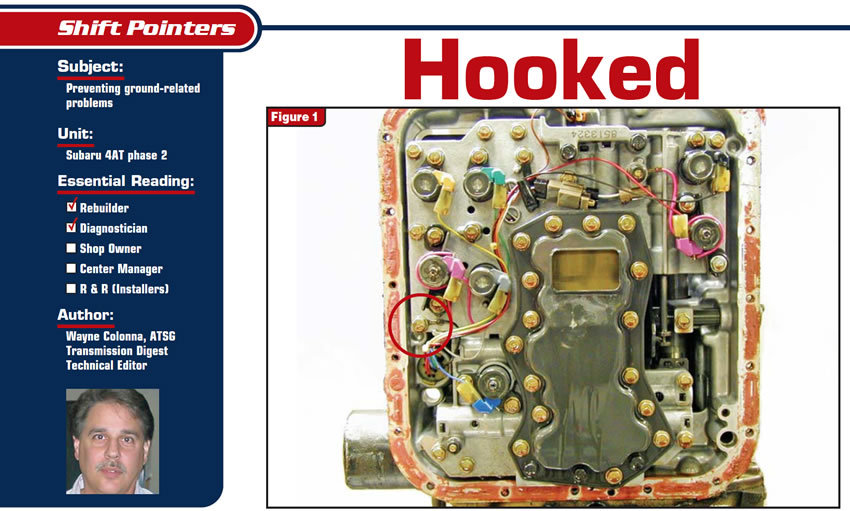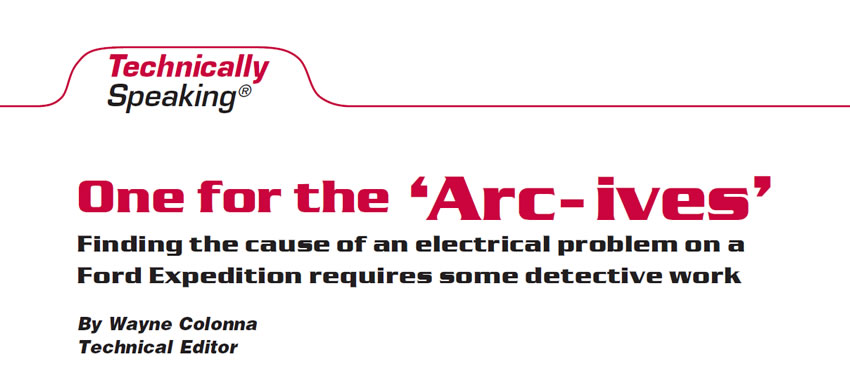Super Sleuth
This vehicle was recently dropped at my door with the daunting “intermittent” concern. Power windows, radio and wipers would work for periods of time – sometimes for full days – and then fail, only to resume for no apparent reason.

Misinformation forces tech to work harder
As with most of the accounts we’ve shared detailing vehicle symptoms and repairs, electrical issues seem to be the most common root cause. Our subject today involves a 2003 Dodge Sprinter 2500 that showed up at our door with the customer informing us that they could not shut it off since it would not restart without jumping the solenoid on the starter. The gentleman stated it would not start with the key, the shifter would not come out of park and the transmission would not shift. He also stated that we had installed a TCM about a year ago, and because it did not shift, the customer thought it was related to what we had done. He also stated he had replaced the fuse in the fuse panel for the transmission and that didn’t help. Apparently, we needed to diagnose some electrical problems.

Taking a Short Trip Back to the 1970s
In a service and repair world filled with CAN/BUS systems, scan tool diagnoses and iATN archives, I found a recent repair interesting due to its lack of these technical needs.
My customer arrived with a 1971 Chevy C10 long-bed pickup truck and a concern that his dash lights did not function. I was excited to accept this repair because I hadn’t had my hands on one of these in quite a while! Besides, how hard could it be to find out why his dash lights weren’t working?

Hindsight Is 20/20
When we installed the new battery we checked the charging system again (the lazy way mentioned previously), and since we saw 13.8 volts we released the vehicle. A few days later she came back complaining of the same problem. This time when we checked the charging system (same old lazy way) we noticed that the generator was not charging, so we recommended replacing the generator, because this type of generator uses a one-way clutch on the pulley and is known to go bad, so we figured (assumed) that that was why we had seen the system charge at some times and not others.

Circuit Interruptus
I recently had a vehicle in with a symptom that I thought would be an easy fix, only to have it take up several hours that I had not anticipated losing. Does this sound familiar?
The 1996 Chevy Tahoe had a customer concern of “No low-beam headlamps.”

Hooked
We all know how important grounds are in an electrical system, and when it comes to our trade we can tell incident after incident of weird, unexplainable transmission malfunctions that are taking on “fish story” proportions. And, in fact, we have caught quite a few large ones over the years.

One for the ‘Arc-ives’
Finding the cause of an electrical problem on a Ford Expedition requires some detective work
A 2002 Ford Expedition equipped with a 4.6-liter V-8 and 4R70W transmission came into the shop with a host of solenoid electrical codes.

A Case of a Leaking Capacitor
It is not uncommon to hear of a technician investigating the inside of a computer as part of a diagnostic routine, especially when dealing with odd continual electrical problems.
Sometimes when the box is opened, a distinct burnt odor confirms the technician’s hunch that it was fried “Fred” causing the problem all along. Sometimes a cracked circuit board is the cause of those pesky intermittent trouble codes. On other occasions the box is filled with water from a leaking sunroof (Honda/Acura) or a leaking heater core (Mitsubishi/Hyundai), or it just had the misfortune of being in a flood.

Replaced the What?
Sometimes a problem with a vehicle requires quite a bit of diagnostic head scratching, at the end of which you finally find what is causing the problem.

EEC-IV and EEC-V Systems – Odd Behavior
EEC-IV and EEC-V systems sometimes may exhibit odd behavior such as erratic shifting, OD or engine light blinking, nonsense or unrelated codes, with no apparent cause.

